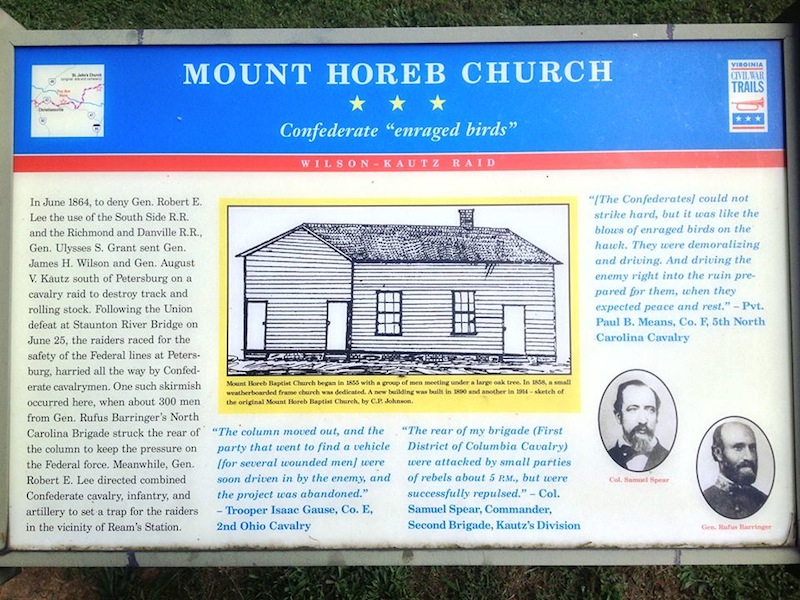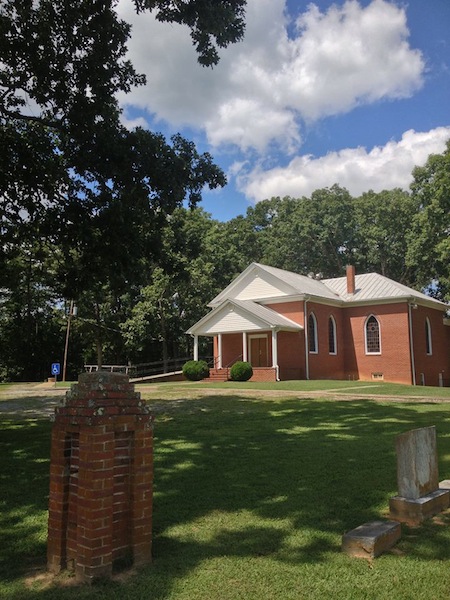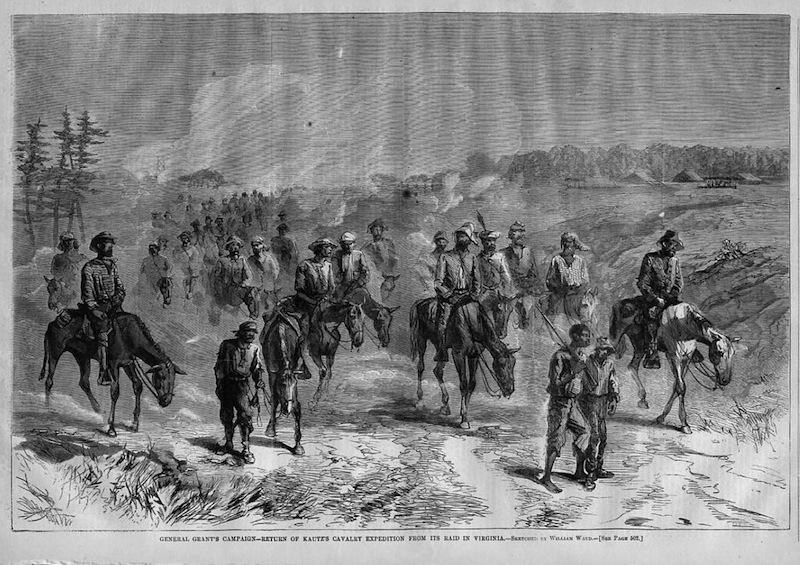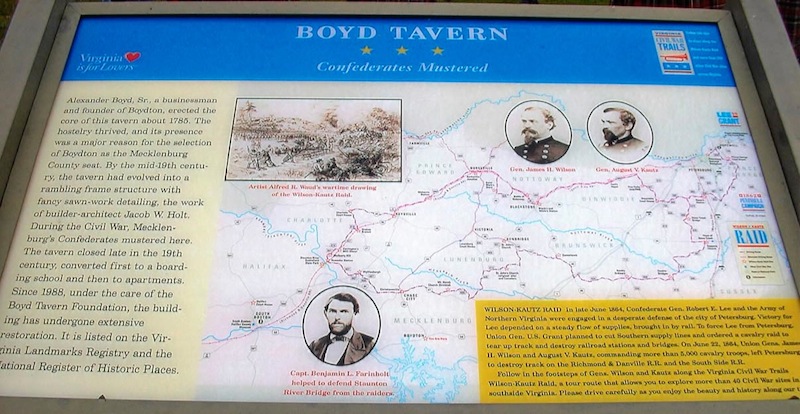Mount Horeb Church - Civil War Trails marker
Marker is in the churchyard of modern-day Mount Horeb Baptist Church on north side of Old Cox Road, 0.1 mile east of Meadows Road, Chase City, Virginia 23924. Church address is listed as 10077 Old Cox Road.
Hours:
Cemetery and Marker Open to the Public
Fees: No
The related marker [View in Link] commemorates a skirmish site where Confederate General Rufus Barringer's North Carolina Brigade struck the rear of the Federal column.
Hours:
Cemetery and Marker Open to the Public
Fees: No
The related Civil War Trails marker includes the subtitle "Confederate 'enraged birds'" along with this description:
"In June 1864, to deny Gen. Robert E. Lee the use of the South Side R.R. and the Richmond and Danville R.R., Gen. Ulysses S. Grant sent Gen. James H. Wilson and Gen. August V. Kautz south of Petersburg on a cavalry raid to destroy track and rolling stock. Following the Union defeat at Staunton River Bridge on June 25, the raiders raced for the safety of the Federal lines at Petersburg, harried all the way by Confederate cavalrymen. One such skirmish occurred here, when about 300 men from Gen. Rufus Barringer's North Carolina Brigade struck the rear of the column to keep the pressure on the Federal force. Meanwhile, Gen. Robert E. Lee directed combined Confederate cavalry, infantry, and artillery to set a trap for the raiders in the vicinity of Ream's Station."
The marker also includes the following caption under drawing of original church:
"Mount Horeb Baptist Church began in 1855 with a group of men meeting under a large oak tree. In 1858, a small weatherboarded frame church was dedicated. A new building was built in 1890 and another in 1914 - a sketch of the original Mount Horeb Baptist Church, by C.P. Johnson."
The marker also features these quotes:
"The column moved out, and the party that went to find a vehicle [for several wounded men] were soon driven in by the enemy, and the project was abandoned." - Trooper Isaac Gause, Co. E, 2nd Ohio Cavalry
"The rear of my brigade (First District of Columbia Cavalry) were attacked by small parties of rebels about 5 P.M., but were successfully repulsed." - Col. Samuel Spear, Commander, Second Brigade, Kautz's Division
"[The Confederates] could not strike hard, but it was like the blows of enraged birds on the hawk. They were demoralizing and driving. And driving the enemy right into the ruin prepared for them, when they expected peace and rest." - Pvt. Paul B. Means, Co. F, 5th North Carolina Cavalry
Pages 293 of Susan Bracey's Life by the Roaring Roanoke offers the following about the Wilson-Kautz Raid:
"The feared raid came, ... following a military action too close to Mecklenburg for comfort. On June 25, 1864, Union forces attacked Confederates at the Richmond and Danville Railroad Bridge over the Staunton River, which the former hoped to destroy. Among those defending the bridge were four Confederate companies, and volunteers from Charlotte and Mecklenburg counties. The Federal attack was not succeeding; when they learned of the approach of a Confederate cavalry company, they withdrew. As they returned to their lines, the Union cavalry force of about two thousand, under General Wilson, moved eastward, through northern Mecklenburg. From Barnes Junction they passed through Christiansville, where tradition says Wilson camped overnight. From there, they proceeded down the Concord-Buckhorn Road."
Mount Horeb Baptist Church is affiliated with the Concord Baptist Association, having been received into the Association in August, 1860.
Contributor: Leigh Lambert, Director of Southside Regional Library
Websites:
http://www.civilwartraveler.com/EAST/VA/va-southside/wilson-kautz.html
http://www.civilwartraveler.com/about/maps/RetreatMap.pdf
Sources:
Full Sources for Historic Sites [pdf]
http://www.civilwartraveler.com/EAST/VA/va-southside/wilson-kautz.html
http://www.civilwartraveler.com/about/maps/RetreatMap.pdf
Sources:
Full Sources for Historic Sites [pdf]
(c) Copyright 2014. All Rights Reserved. Designed by Jason Winter ||



